Project Batch: First Batch of 2020
Project Number: 202002142047
Project Type: New Engineering Construction Project
Project Implementation Background
With the arrival of the 5G era, the Internet of Things is redefining people’s lives and work styles. The “ubiquitous connection” and “ubiquitous computing” based on intelligent IoT have propelled the design and application technology of embedded micro systems into a new leap forward development stage. The applications of AIoT (AI + IoT) are disrupting existing market rules, and diversified applications and new ecosystems are beginning to take shape.
The rapid transformation of the industry continuously raises new demands for higher education. Universities must look to the future and actively explore effective methods to cultivate new IoT engineering talents with stronger cross-disciplinary integration capabilities and higher innovation and entrepreneurship abilities, leveraging long-term deep cooperation advantages with enterprises.
The “Microprocessor and Embedded Systems” teaching team at the University of Electronic Science and Technology of China (UESTC) has a long-standing and deep cooperative foundation with Huawei. To implement the Ministry of Education’s collaborative education concept, adapt to the current requirements of new engineering education, further enhance students’ comprehensive ability to solve complex engineering problems, strengthen the cultivation of students’ engineering quality and industry awareness, and jointly promote the ecological environment construction of self-innovated chips and operating systems, this project is based on new technologies, new business formats, and new industry needs. By continuously integrating new knowledge and technologies from the industry into the teaching process and using new forms of “golden courses” such as challenging new student projects and online-offline mixed formats, along with coordinated discipline competitions and research training, we actively explore effective methods to cultivate “new engineering and technology talents with higher innovation and entrepreneurship capabilities and cross-disciplinary integration capabilities.”
Reform Ideas and Measures
The embedded micro systems curriculum group is a foundational discipline for engineering in electronics, electrical, and information engineering, among other non-computer majors. This curriculum group involves multiple technical fields such as computer science, communication, microelectronics, and automatic control, with a wide knowledge base, strong systematics, rapid development, and typical cross-disciplinary and cross-industry characteristics.
To better align with the current industry development trends, guide students to focus on national needs and social responsibilities, and fully stimulate students’ motivation and enthusiasm for autonomous learning, the UESTC teaching team aims for the future AIoT industry, proposing to “drive by projects and center on students”. Through enhancing students’ autonomous learning capabilities, we promote the cultivation of undergraduate students’ practical abilities in new engineering construction.
Based on an in-depth analysis of the current pain points in teaching processes, the teaching team has determined the basic reform ideas for the embedded micro systems and IoT technology curriculum group (Figure 1):
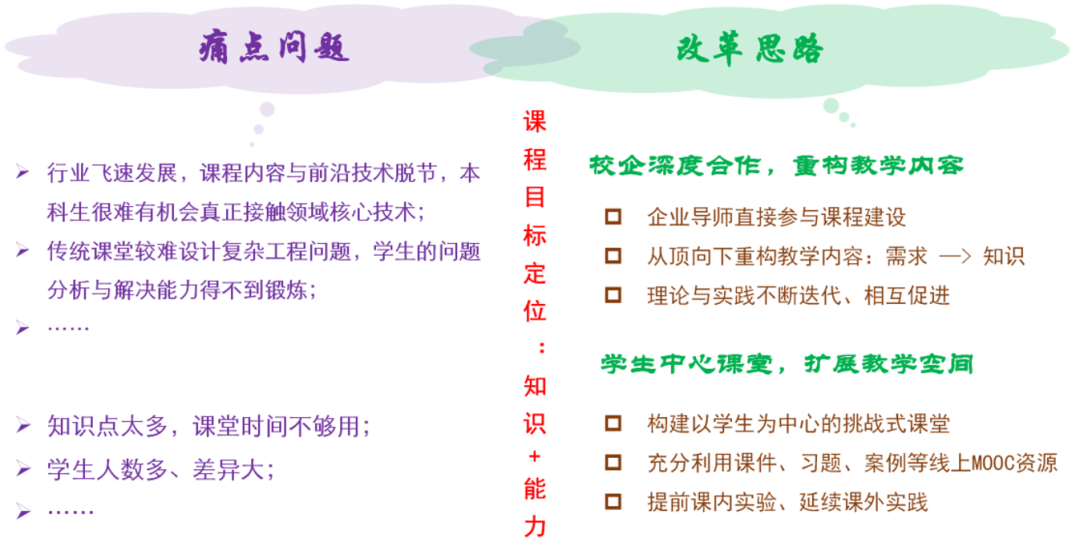
Figure 1 Project Reform Ideas
1. Deep Cooperation between Schools and Enterprises, Restructuring Teaching Content
The continuous development of technology leads to rapid interdisciplinary convergence and an explosion of new knowledge, requiring existing teaching content systems to keep pace with cutting-edge industry technologies and continuously expand and update.
The teaching team will introduce current industry needs into the classroom, adopting team project development forms to integrate core knowledge points of embedded micro systems and IoT technology fields such as microelectronics, digital logic, computer architecture, and SoC applications throughout the entire project development process.
2. Student-Centered Classroom, Expanding Teaching Space
Researching a self-learning ability cultivation education system that integrates faculty, courses, activities, practical training, and competitions, we explore the complementary effect of student self-organization and self-learning practice systems on professional learning. This is beneficial for strengthening the integration of theoretical learning, engineering practice, and scientific research abilities of graduate students, while also helping students focus on actual social needs, gaining in-depth understanding and active thinking about industry application prospects from different levels.
Thus, the teaching team is deeply researching the iterative fusion model of multiple teaching links such as course design and implementation for challenging project courses, actively exploring the promoting effect of student self-organization and self-learning practice systems on professional course learning.
The project adopts a collaborative model of “organic integration and progressive iteration” and advances in three stages.
Stage One: Discussion and Construction
Enterprises provide project funding support and a certain number of software and hardware development kits, organizing various forms of faculty exchanges and training activities online and offline; universities combine A+ discipline talent training goals to organically integrate industry autonomous cutting-edge technologies into teaching content, design teaching cases, and research teaching methods.
Highlights: Enterprise engineers directly participate in and actively promote the production and improvement of teaching materials and video resources.
Stage Two: Implementing Reforms
Enterprises assist in the reform and upgrade of course teaching content and teaching models, and directly participate in course practice, competition guidance, summer teaching, and other links; universities implement specific course construction measures, leveraging national-level first-class online courses and national planning textbooks to build challenging, new student project-type demonstration courses, summarize teaching results, and continue to apply for provincial and ministerial-level teaching reform projects.
Highlights: Create a distinctive golden course group at the university, benefiting undergraduate and graduate students.
Stage Three: Deepening and Promoting
Jointly build a school-enterprise collaborative course collection and establish a university-level general education demonstration course within 2-3 years; jointly build student practice and competition bases to enhance the level of discipline competitions among university students in the Southwest region; jointly build quality education classrooms in secondary schools to expand and guide high school students’ enthusiasm for innovation and entrepreneurship and their patriotic sentiments.
Highlights: Team teachers will bring teaching content into secondary school classrooms, injecting new momentum into the cultivation of the next generation of innovative talents.
Project Achievements, Innovations, and Effects
This project has been awarded as an excellent project case in the 2022 “Ministry of Education Industry-Academia Cooperation Contract Collaborative Education Project”.
At the same time, the project results have strongly supported the construction of 1 national-level first-class online course (Figure 2), 1 national-level planning textbook (Figure 3), 2 Sichuan Provincial Higher Education Talent Cultivation Quality and Teaching Reform Projects, and the reform of 4 university-level demonstration courses.

Figure 2 National First-Class Online Course (9 sessions held, nearly 30,000 online course selections)
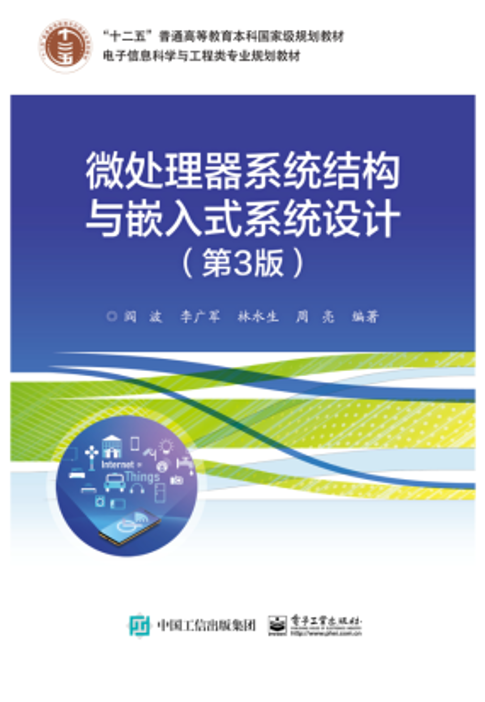
Figure 3 National Planning Textbook
Project results have participated in winning the first prize for teaching achievements in Sichuan Province, the second prize for teaching achievements at UESTC, the first prize for teaching reform and innovation demonstration at UESTC, and the second prize for undergraduate new engineering education textbook construction at UESTC, each one.
Key teachers of the project team have been recognized as Huawei Developer Evangelists, won the national third prize in the national college electronic information professional course experimental case design competition, recognized as excellent IoT teachers in Sichuan Province, awarded as excellent guiding teachers in the Sichuan Province University Embedded Design Competition, and received the Chengdu Innovation Teaching Demonstration Award.
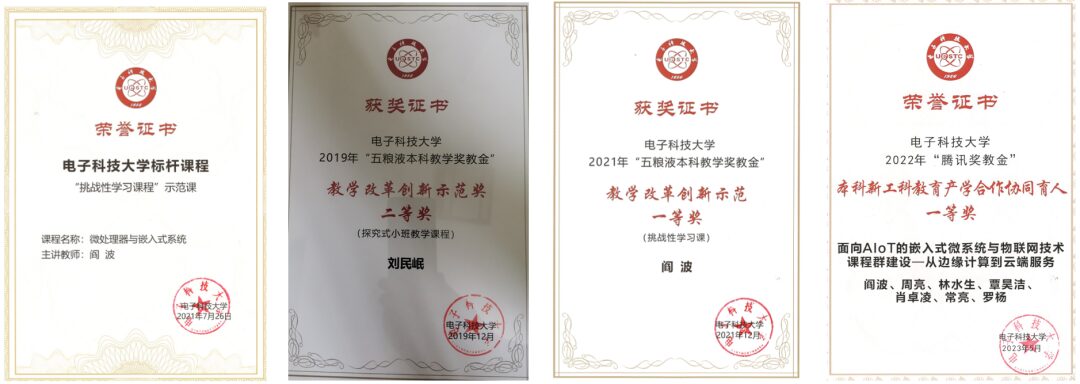
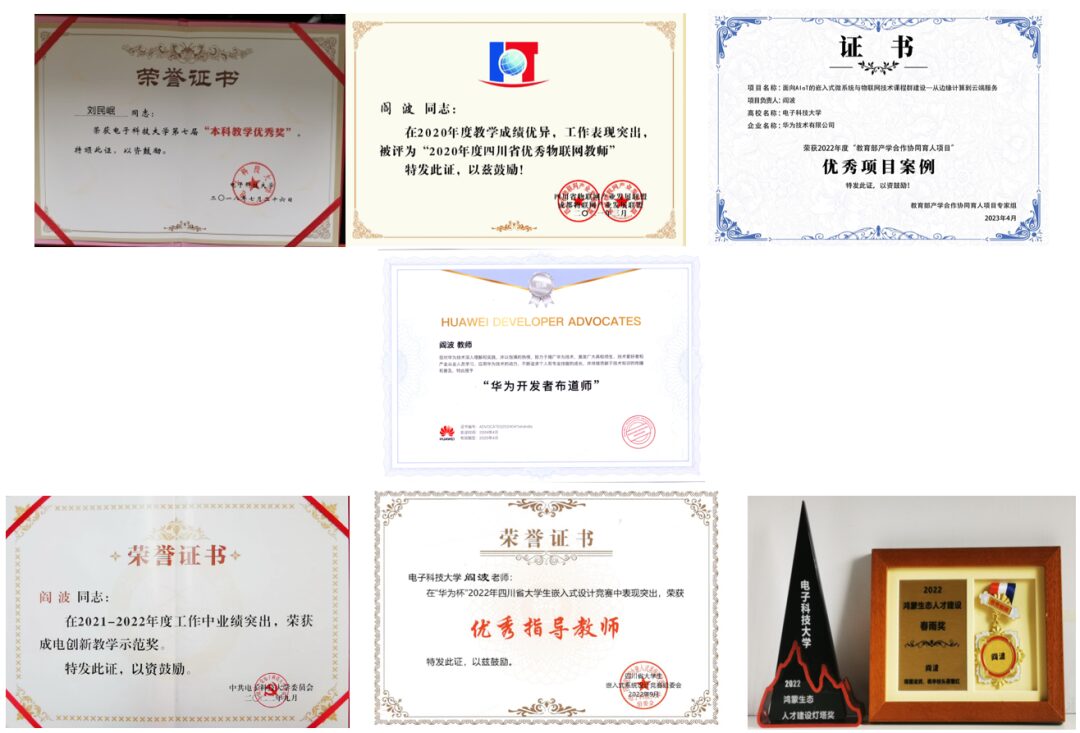
Figure 4 Some Project Achievements
The main achievements and innovations of the project are reflected in the following three aspects:
1. Establishing a Multi-Level Teaching System from High School to Undergraduate, from Classroom to Competition, Promoting Teaching System Reform
The project focuses on the core idea of new engineering construction, aiming to refine the essential needs of advanced talents in future industries. It attaches knowledge transfer to capability cultivation, broadly attempting effective cooperation paradigms for professional courses, school-enterprise courses, competition courses, research training, and graduation design, exploring promotion and application methods for students of different ages, majors, and types.
By co-hosting summer camp activities for high school students and offering quality education courses, the project team has also brought industry cutting-edge technologies into secondary school classrooms, providing new ideas for further deepening the reform of the new engineering teaching system.
The construction of the multi-level teaching system and the positioning of teaching objectives are shown in Figure 5.
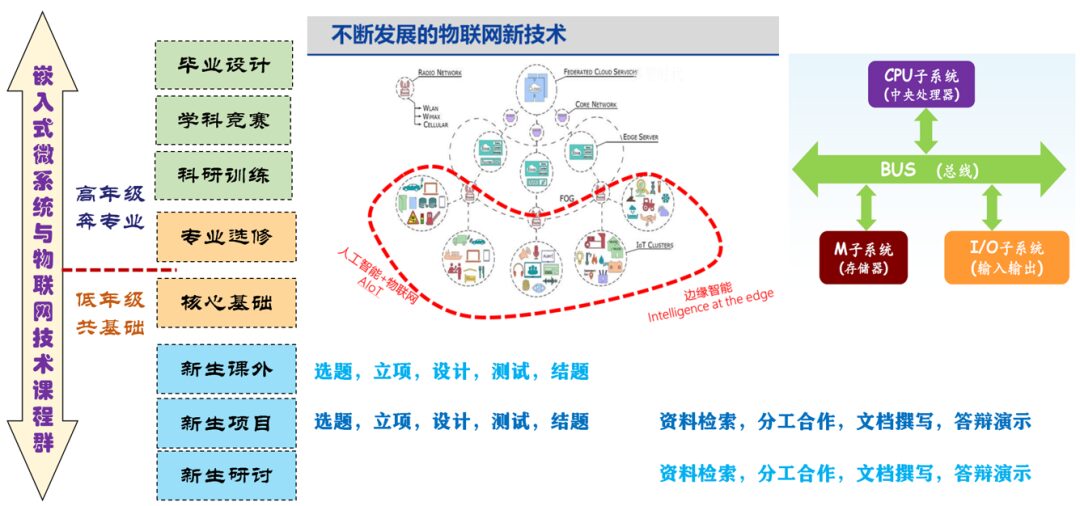
(a) Multi-Level Teaching System Design Across Stages, Grades, and Courses
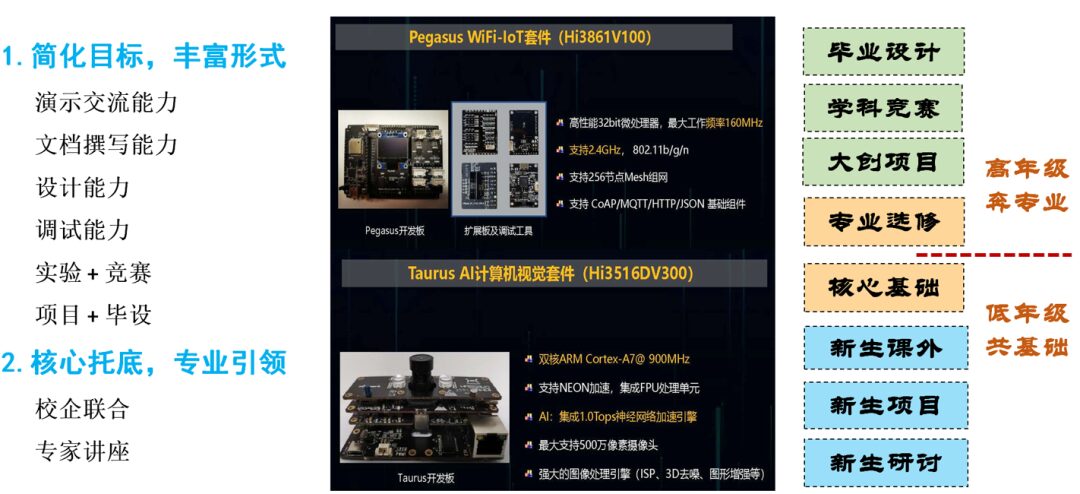
(b) Teaching Objective Positioning of Huawei IoT Suite in Different Undergraduate Courses
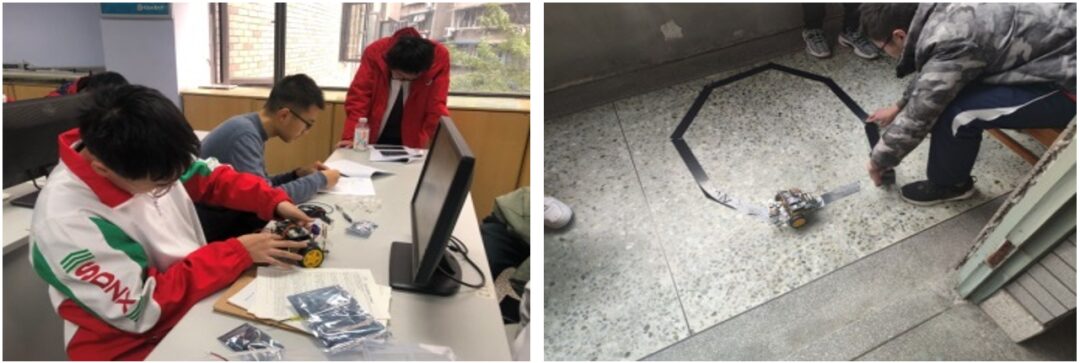
(c) Bringing Industry Cutting-Edge Technologies into High School Classrooms
Figure 5 Multi-Level Teaching System from High School to Undergraduate, from Classroom to Competition
2. Establishing a Multi-Loop Educating Model of Online-Offline Hybrid and In-Class-Out-of-Class Collaboration, Exploring Teaching Model Innovation
The project, guided by the new concept and model of collaborative education, aims to strengthen students’ application and development capabilities for complex systems. It has established a mixed, collaborative education mechanism that combines classroom teaching with discipline competitions, guiding students to continuously invest their limited time and energy into their beloved research directions across stages, grades, and courses. This actively stimulates students’ exploration and curiosity about future industries, providing an effective avenue for exploring the reform of the teaching model that prioritizes learning and is output-oriented. By introducing autonomous cutting-edge technologies into different stages and objectives of teaching scenarios, a multi-loop educating model has been constructed.
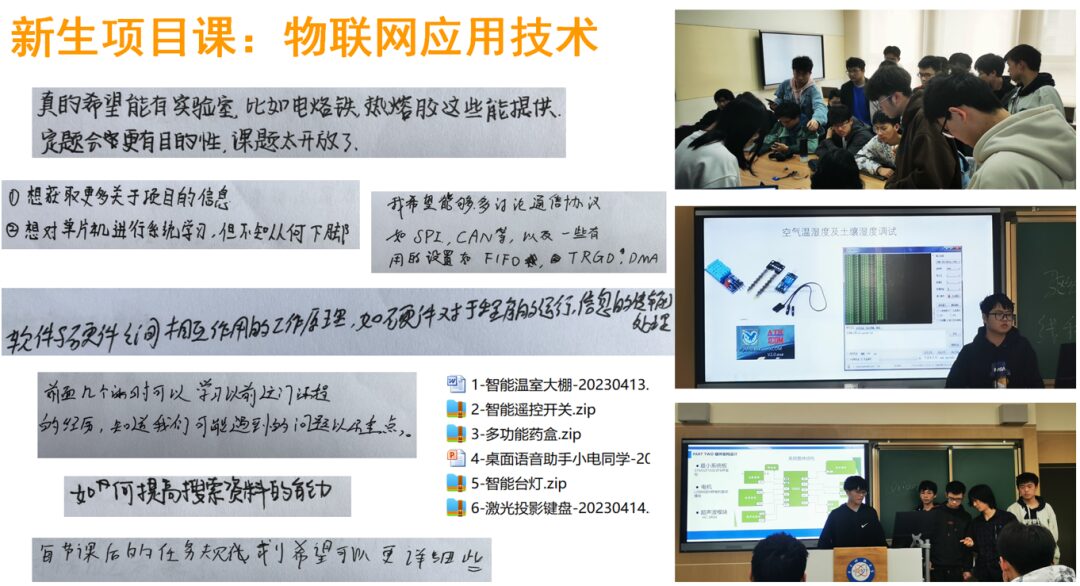
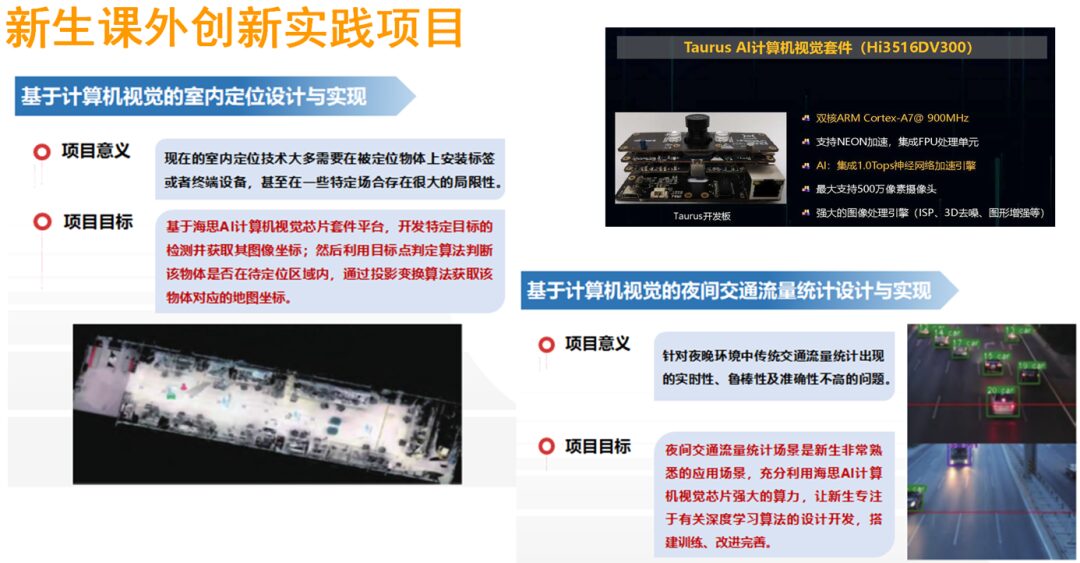
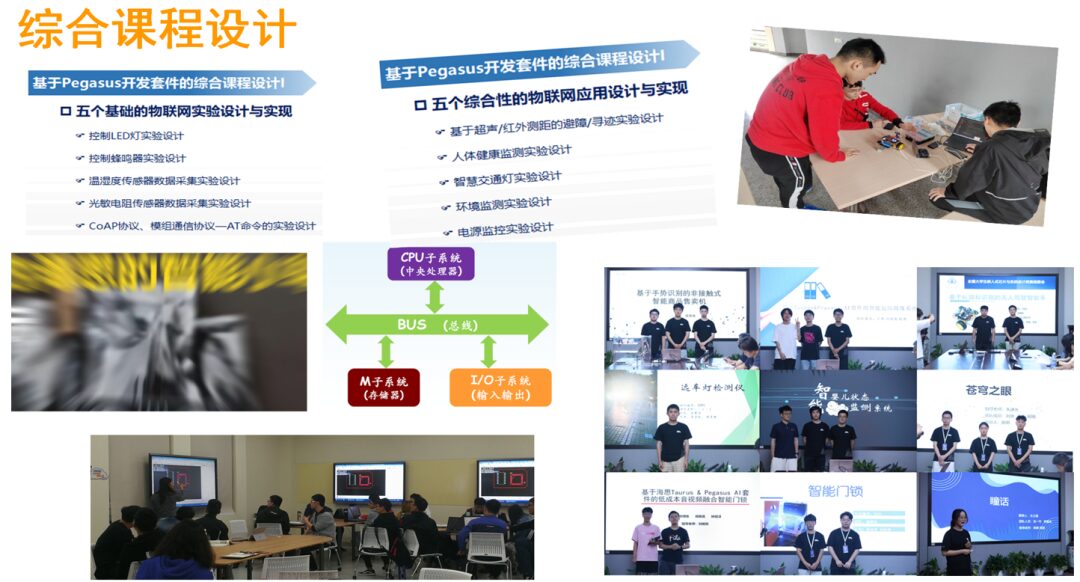
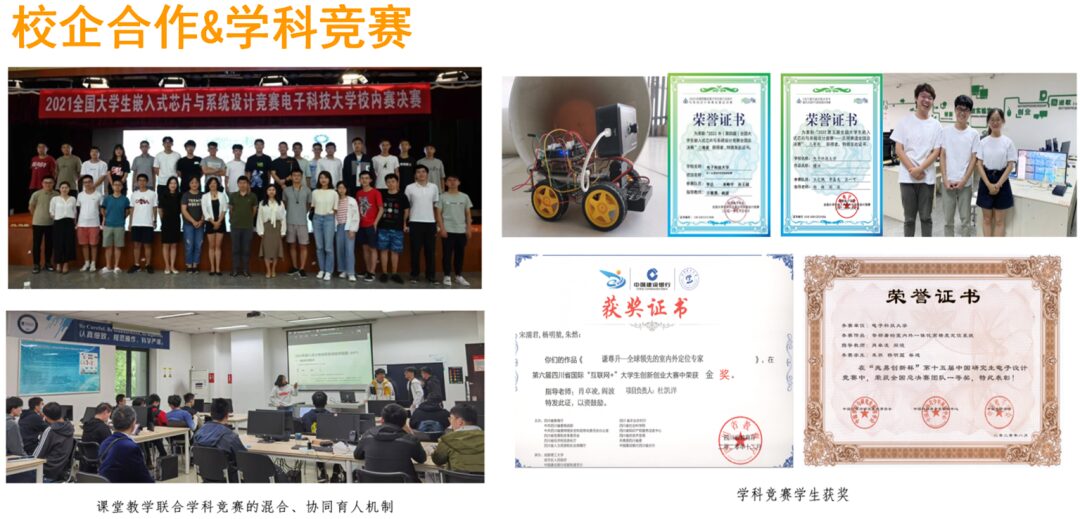
Figure 6 Classroom Teaching of Online-Offline Hybrid and In-Class-Out-of-Class Collaborative Multi-Loop Educating Model
3. Focusing on National Strategy, Aiming at Independent Industrial Technology Research and Application, Practicing the Mission of Cultivating Virtue and Talent
Focusing on national strategy and using IoT technology applications as a medium, we have carried out vivid and three-dimensional ideological and political practices in new engineering courses, encouraging and cultivating students to invest in the application and development of independent high-tech. The educational effect is significant. At the same time, leveraging the university’s recruitment publicity, we have expanded the project to excellent high school student groups by participating in summer camp activities and offering quality education elective courses, injecting new momentum into the cultivation of innovative talents leading the development and upgrading of industry technologies.
Application and Promotion Status
1. Promotion of Demonstrative Curriculum Group Teaching System
Leveraging the cross-disciplinary and cross-industry characteristics of embedded micro systems, the project uses “doing” as the main line, “learning” as the goal, and “teaching” as the means, adopting team project development forms to guide students in connecting and integrating multidisciplinary knowledge points through system design analysis and problem-solving. By solving practical problems, we cultivate students’ awareness of interdisciplinary application and their evaluation, analysis, and problem-solving abilities for actual complex engineering issues, enhancing their learning vision, professional quality, and confidence through challenging goal settings, thereby promoting the construction and reform of the practical teaching system.
Demonstrative courses such as “IoT Application Technology (New Student Project Course)” and “Microprocessor and Embedded Systems (Challenging Course)” have been established, covering multiple colleges or majors such as communication, electronics, aerospace, automation, and Internet+ at UESTC, directly reaching over 200 students in classes. By leveraging national first-class online courses (MOOC platform) and national planning textbooks, at least 4,000 students benefit each year.
Core technologies are brought into high school quality elective courses and summer camps, guiding high school students to complete IoT application projects based on self-developed chips and development environments. Each year, no less than 40 teaching hours directly cover nearly a hundred students.
2. Promotion of Collaborative Multi-Loop Educating Teaching Model
Joint discipline competitions have constructed a hybrid online-offline and collaborative teaching model, hosting two national college student embedded chip and system competitions (Southwest region):
In 2021, 327 schools and 2,781 teams participated (UESTC entered 63 teams with 167 students). Among them, 17 UESTC teams registered for the Shanghai HiSilicon application track, winning 3 regional awards and 1 national award;
In 2022, 411 schools and 4,717 teams participated (UESTC entered 87 teams with 242 students). Among them, 29 UESTC teams registered for the Shanghai HiSilicon application track, winning 15 regional awards and 7 national awards;
Guided by the new collaborative education model, relying on school-enterprise joint courses and practical training bases, we have enhanced the level of discipline competitions among university students in the Southwest region, benefiting no less than 1,000 students each year.
3. University-Level and National Teacher Training and Exchange Activities
Key teachers of the teaching team actively participate in university-level and national teaching conferences and have organized multiple training and exchange activities for teachers, directly impacting no less than 300 people.
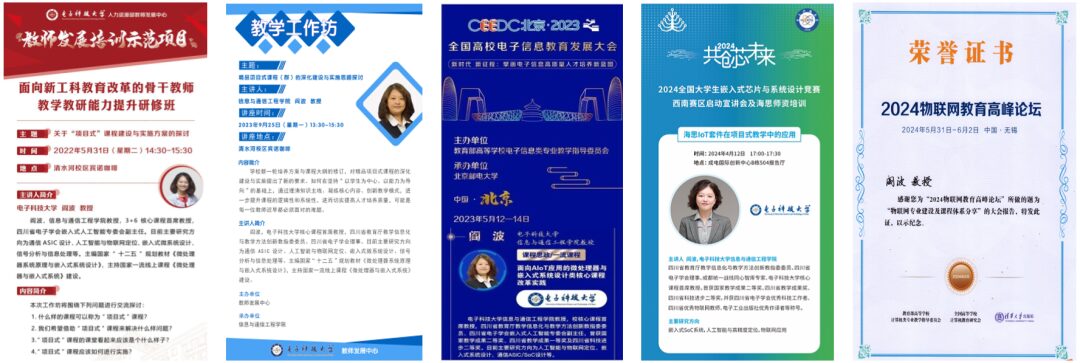

Figure 7 Internal and External Teaching Experience Exchange
Experience Summary
The project adheres to the “Chengdu Plan” of new engineering construction, relying on A+ discipline advantages and leveraging autonomous industrial advantages, conducting extensive exploration and practice of talent cultivation models aimed at the future AIoT industry, achieving preliminary results:
1. Promoting innovation in the teaching system by introducing autonomous cutting-edge technologies into different stages and objectives of teaching scenarios, constructing a multi-level teaching system from high school to undergraduate;
2. Exploring teaching model reforms, prioritizing learning, and establishing a hybrid online-offline and collaborative multi-loop educating model;
3. The research results of this project have considerable reference significance for the cultivation model of comprehensive computer capabilities among students in similar universities in China and can serve as a reference case for interdisciplinary integration reforms in undergraduate computer education.